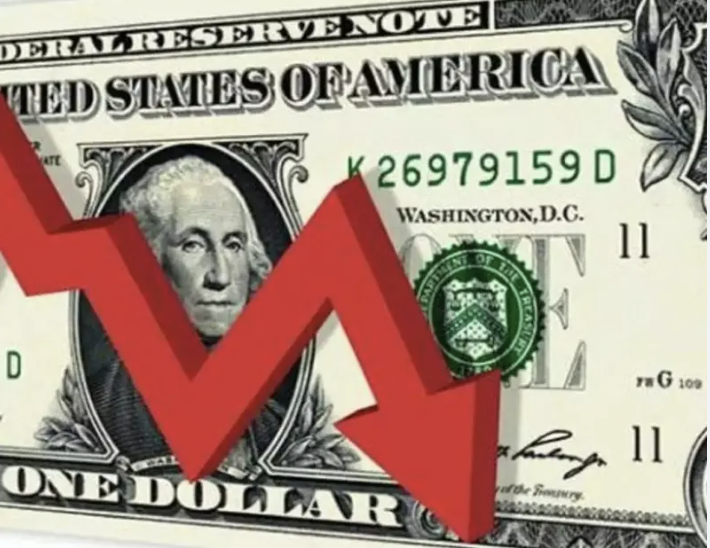As we wander through the intricate maze of the financial world, today, in particular, brings a sense of nervous anticipation. The US stock market and the dollar are stumbling a bit, trying to find their footing as investors eagerly await some pivotal economic data. The data in question? Job figures, poised to offer insight into the health of the American employment landscape. It is said anticipation that can often tip the scales one way or another, making even the most steadfast of hearts skip a beat.
Market Movements: Stocks Fumble, Dollar Wobbles
In a day defined by a delicate balancing act, the Dow Jones Industrial Average has been teetering, dropping by about 200 points, or roughly 0.6%. Meanwhile, the S&P 500 and Nasdaq Composite have joined this jittery dance, both losing just under 0.5%. Investors are bracing themselves, their eyes trained on the horizon, waiting for the job numbers to paint a clearer picture.
This jitteriness has had a ripple effect has hit various sectors:
- Tech Companies: This sector, which has been a beacon of strength in recent months, saw a modest dip. Giants like Apple, Microsoft, and Tesla experienced slight declines.
- Financial Stocks: Banking behemoths such as JPMorgan Chase and Bank of America also found themselves in the red.
- Consumer Goods and Services: Companies like Procter & Gamble and Starbucks weren’t spared either as the market’s unease took a broad sweep.

The Role of the US Dollar
The majestic greenback, a symbol of American financial might, has found itself on unsteady ground. Recent trading sessions have seen the dollar retreating slightly against major currencies like the euro, yen, and pound. The dollar’s fluctuations reflect broader global concerns about inflation and interest rates. But today, all eyes are on the job numbers, as they could be the pivotal factor determining the dollar’s next move:
- Dollar vs. Euro: The euro has strengthened, inching closer to the 1.20 mark against the dollar.
- Dollar vs. Yen: Similarly, the yen has gained ground, potentially signaling increased investor confidence in Japan’s economy or a retreat from USD due to market uncertainties.
- Dollar vs. Pound: The British pound has also seen a slight uptick, with currency traders keenly monitoring any shifts in U.S. economic policy.
Why Job Data Matters So Much
But why this heightened sensitivity to job numbers? The answer is, understandably, profoundly human. Employment data serve as a barometer, measuring the overall health of the economy. When job numbers are strong, it suggests companies are hiring, consumer confidence is up, and economic growth is robust. Conversely, weak job data can indicate economic sluggishness, a potential harbinger of tougher times ahead.
The Federal Reserve, the grand maestro orchestrating the nation’s monetary policy, often takes cues from these employment reports. Strong job figures could prompt the Fed to continue its present course or even consider hiking interest rates to curb inflation. Conversely, faltering employment data might push the Fed towards adjusting its policies to stimulate growth.

Expectations and Predictions
Analysts and economists alike have been busy comparing notes, engaging in the intellectual equivalent of tea leaf reading. The consensus is that the August jobs report will likely show an increase in nonfarm payrolls by about 170,000, with the unemployment rate holding steady at 3.5%. However, the true intrigue lies in whether the actual figures will deviate from these expectations and, if so, by how much.
Key points to look for in the report:
- Nonfarm Payrolls: A significant metric that indicates the number of jobs added, excluding agricultural positions.
- Unemployment Rate: An overarching measure of the nation’s employment health, reflecting the number of unemployed individuals actively seeking work.
- Wage Growth: Investors will scrutinize wage growth data, which impacts consumer spending and inflationary pressures.
Maintaining Optimism Amidst Uncertainty
While today’s financial landscape may seem precarious, it’s essential to remember that markets are continually evolving, influenced by myriad factors. Seasoned investors understand the cyclical nature of economic patterns and maintain a long-term perspective even during moments of heightened volatility.
A ray of positivity shines through amidst the market’s current trepidation. Should the jobs data reveal strength, it could underscore the resilience of the American economy, restoring confidence among investors. Furthermore, the prospective tightening of monetary policies could help stabilize inflation, fostering sustainable growth.
While the markets may be under pressure today, it’s crucial to maintain an optimistic outlook. Economic indicators, including employment data, will continue to guide our understanding of the financial landscape. Through it all, history has shown that markets can adapt and thrive even in the face of uncertainty, and today’s cautious anticipation could very well pave the way for tomorrow’s renewed confidence and prosperity.